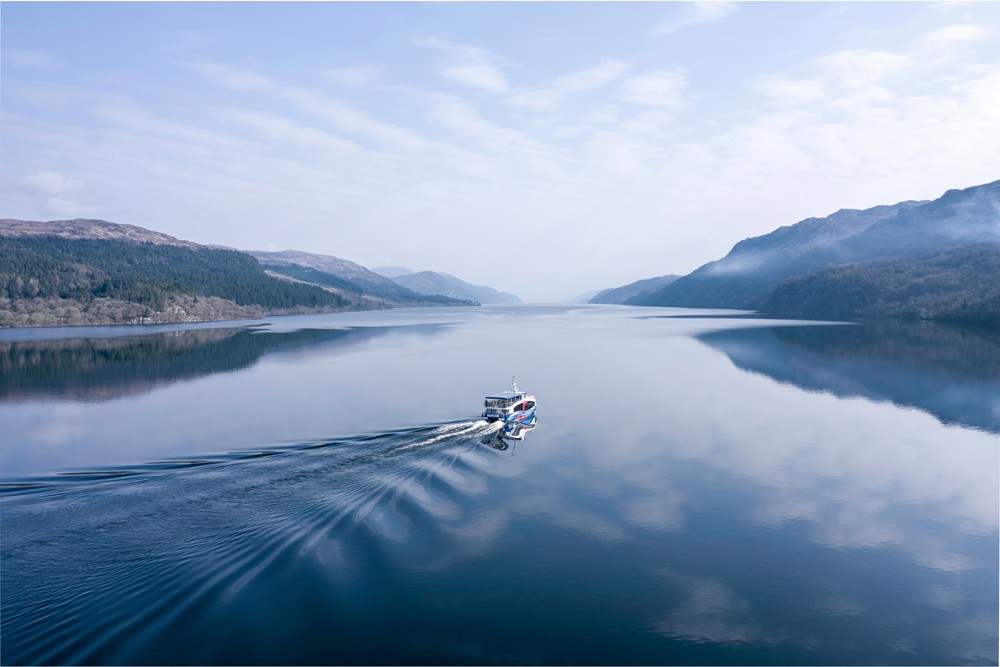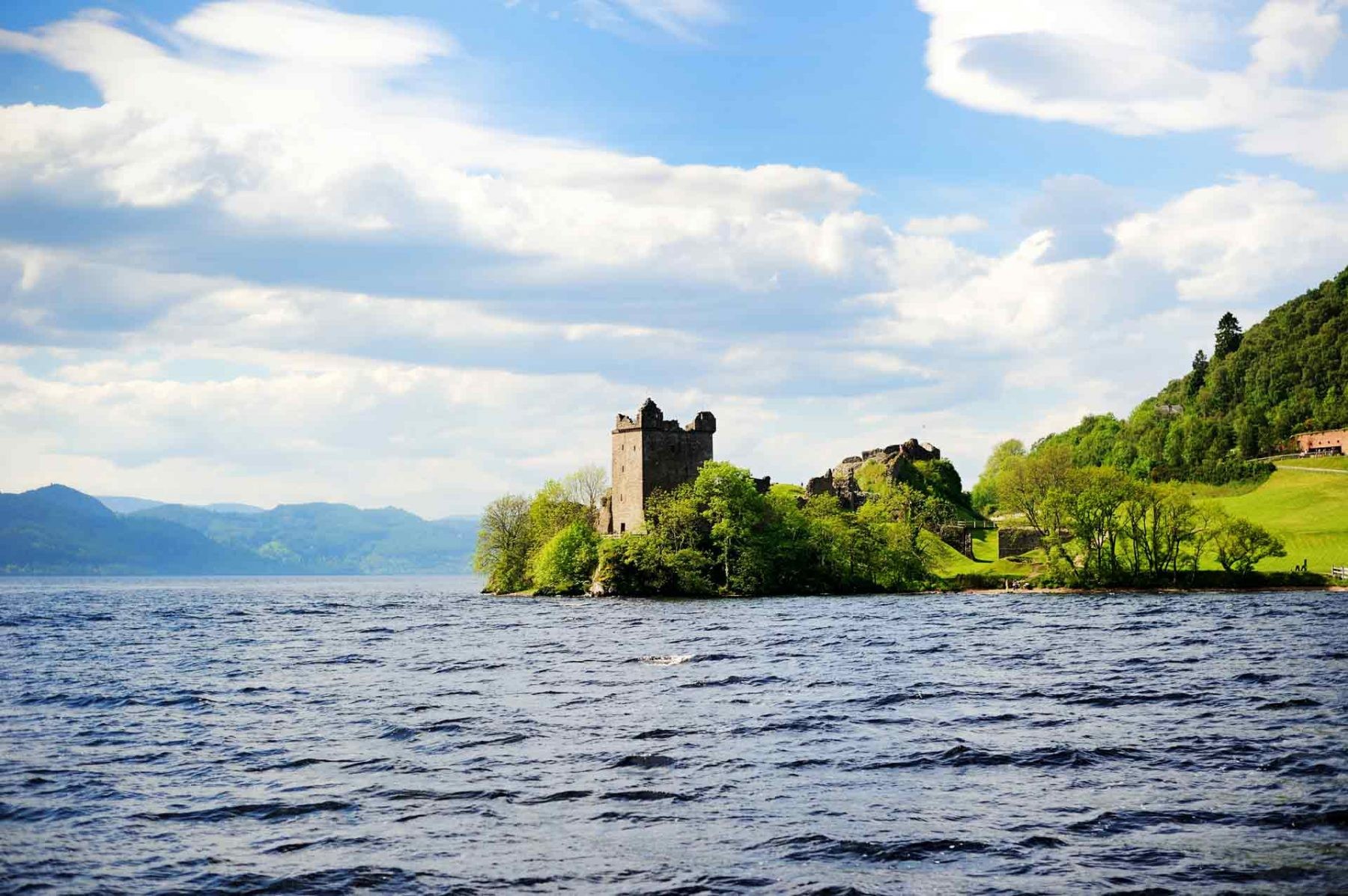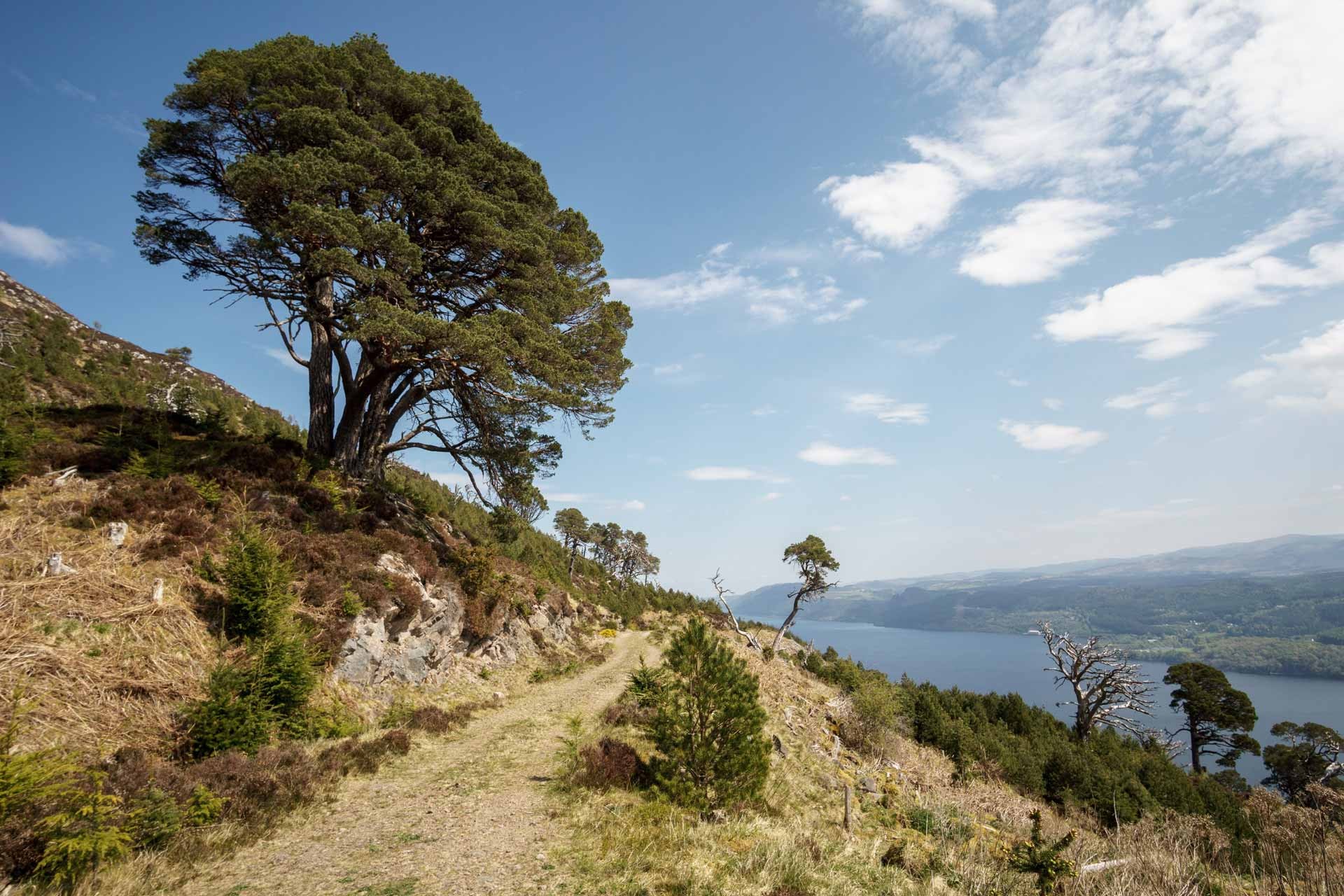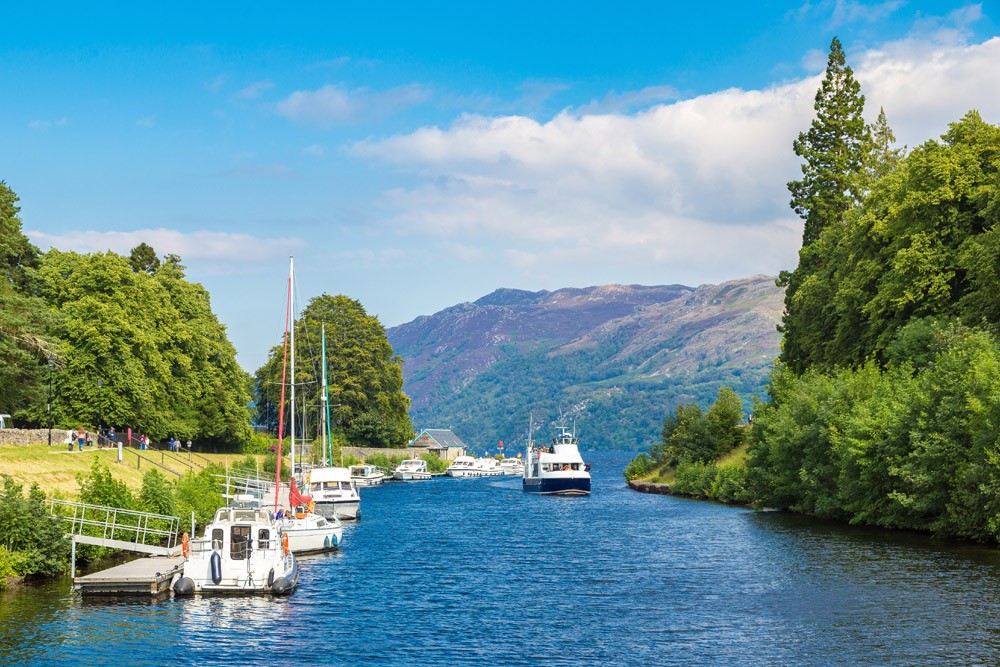Loch Ness compared to Great Lakes: a detailed exploration brought to you by COMPARE.EDU.VN, provides a comprehensive analysis of the size and characteristics of these iconic bodies of water. This comparison sheds light on their respective volumes, depths, and geological significance, assisting readers in gaining a deeper understanding of these natural wonders. Dive in to explore the dimensions, volume disparities and geological formations and other crucial factors to consider.
1. Introduction: Loch Ness vs. The Great Lakes
When contemplating the world’s most famous bodies of water, Loch Ness and the Great Lakes often spring to mind. Loch Ness, shrouded in mystery and legend, is a deep freshwater loch in the Scottish Highlands, while the Great Lakes, a collection of five interconnected freshwater lakes primarily located in the United States and Canada, are renowned for their vastness and ecological importance. Comparing these two bodies of water is akin to juxtaposing a mythical enigma against a sprawling natural phenomenon. This analysis, powered by COMPARE.EDU.VN, will explore the dimensions, volume disparities, and geological formations, offering a comprehensive understanding of their distinctive characteristics and geological history.
2. Unveiling Loch Ness: Scotland’s Mystical Lake
2.1. Location and Geological Formation
Loch Ness is situated in the Scottish Highlands, stretching approximately 23 miles (37 kilometers) southwest of Inverness. This elongated freshwater loch is part of the Great Glen, a geological fault line that divides the Scottish Highlands. The loch was formed by glacial action during the last ice age, which carved out the deep basin that now holds its waters. The Great Glen fault line is a significant feature, contributing to the loch’s unique shape and depth.
2.2. Dimensions and Depth
Loch Ness is renowned for its impressive depth, reaching a maximum of 754 feet (230 meters), making it the second deepest loch in Scotland, surpassed only by Loch Morar. Its surface area spans approximately 21.8 square miles (56.4 square kilometers). While not the largest in surface area, Loch Ness holds the largest volume of fresh water in the British Isles.
2.3. Water Volume and Clarity
The water volume of Loch Ness is estimated at 263 billion cubic feet (7.4 billion cubic meters), surpassing the combined water volume of all lakes, rivers, and reservoirs in England and Wales. The loch’s water is notably dark and murky, owing to the high peat content in the surrounding soil. This poor water clarity contributes to the mystique of Loch Ness, adding to the difficulty in spotting the elusive Nessie, the Loch Ness Monster.
Alt: Boat tour on Loch Ness, Scotland, under cloudy sky, surrounded by rolling green hills.
2.4. The Legend of Nessie
No discussion of Loch Ness is complete without mentioning the legend of Nessie. The Loch Ness Monster has been a subject of fascination and speculation for centuries, with the first recorded sighting dating back to the 6th century. Numerous expeditions and studies have been conducted to prove or disprove the existence of Nessie, but the mystery endures, drawing tourists and monster hunters from around the globe.
3. Exploring the Great Lakes: North America’s Freshwater Giants
3.1. Overview of the Great Lakes
The Great Lakes are a chain of interconnected freshwater lakes located primarily in the United States and Canada. They consist of five major lakes: Ontario, Erie, Michigan, Huron, and Superior. These lakes form the largest surface freshwater system on Earth, containing approximately 21% of the world’s surface fresh water.
3.2. Lake Superior: The Largest and Deepest
Lake Superior is the largest of the Great Lakes by surface area and volume, and it is also the deepest, with a maximum depth of 1,333 feet (406 meters). Its surface area covers approximately 31,700 square miles (82,100 square kilometers), making it the largest freshwater lake in the world by surface area. Lake Superior’s immense size and depth give it a significant thermal mass, influencing the climate of the surrounding region.
3.3. Lake Michigan: The Only Great Lake Entirely Within the US
Lake Michigan is the only Great Lake located entirely within the United States. It is the second-largest of the Great Lakes by volume and the third-largest by surface area, covering approximately 22,404 square miles (58,030 square kilometers). Its maximum depth reaches 923 feet (281 meters). Lake Michigan is known for its sandy beaches and vibrant coastal cities, including Chicago and Milwaukee.
3.4. Lake Huron: Second Largest by Surface Area
Lake Huron is the second-largest of the Great Lakes by surface area, covering approximately 23,007 square miles (59,590 square kilometers). Its maximum depth is 750 feet (229 meters), slightly shallower than Lake Michigan. Lake Huron is characterized by its numerous islands, including Manitoulin Island, the largest freshwater island in the world.
3.5. Lake Erie: The Shallowest and Warmest
Lake Erie is the shallowest of the Great Lakes, with an average depth of only 62 feet (19 meters) and a maximum depth of 210 feet (64 meters). Due to its shallowness, Lake Erie is the warmest of the Great Lakes, which can lead to algal blooms and other environmental challenges. Its surface area spans approximately 9,910 square miles (25,670 square kilometers).
3.6. Lake Ontario: The Smallest by Surface Area
Lake Ontario is the smallest of the Great Lakes by surface area, covering approximately 7,340 square miles (18,960 square kilometers). However, it is still quite deep, with a maximum depth of 802 feet (244 meters). Lake Ontario is the easternmost of the Great Lakes and serves as the outflow to the St. Lawrence River, which eventually empties into the Atlantic Ocean.
4. Comparative Analysis: Loch Ness vs. The Great Lakes
4.1. Surface Area Comparison
When comparing the surface area of Loch Ness to the Great Lakes, the difference is staggering. Loch Ness covers approximately 21.8 square miles (56.4 square kilometers), while the Great Lakes collectively cover around 94,250 square miles (244,106 square kilometers). Even the smallest of the Great Lakes, Lake Ontario, is significantly larger than Loch Ness, with a surface area of 7,340 square miles (18,960 square kilometers).
4.2. Depth Comparison
Loch Ness has a maximum depth of 754 feet (230 meters), making it a relatively deep lake. However, Lake Superior dwarfs Loch Ness in terms of depth, with a maximum depth of 1,333 feet (406 meters). Lake Ontario is also deeper than Loch Ness, with a maximum depth of 802 feet (244 meters). Lake Michigan and Lake Huron have comparable depths to Loch Ness, while Lake Erie is significantly shallower.
4.3. Volume Comparison
In terms of water volume, the Great Lakes hold an immense amount of fresh water compared to Loch Ness. Loch Ness has an estimated water volume of 263 billion cubic feet (7.4 billion cubic meters). In contrast, the Great Lakes collectively hold approximately 6 quadrillion gallons (23 quadrillion liters) of water. Lake Superior alone contains about half of the total water in the Great Lakes, dwarfing the volume of Loch Ness.
4.4. Geological Significance
Both Loch Ness and the Great Lakes have significant geological importance. Loch Ness is part of the Great Glen fault line, a major geological feature in Scotland. The Great Lakes were formed by glacial activity during the last ice age, which carved out the lake basins and shaped the surrounding landscape. The geological history of these bodies of water has played a crucial role in their formation and characteristics.
Alt: Historic Urquhart Castle ruins overlooking Loch Ness, Scotland, with cloudy skies.
4.5. Ecological Importance
The Great Lakes are of immense ecological importance, supporting a diverse range of plant and animal species. They provide habitat for numerous fish species, waterfowl, and other wildlife. The Great Lakes also serve as a critical source of fresh water for millions of people in the United States and Canada. Loch Ness, while smaller in scale, also supports a unique ecosystem, with its own array of aquatic life and surrounding flora and fauna.
4.6. Human Impact and Environmental Concerns
Both Loch Ness and the Great Lakes face various environmental challenges due to human activity. Pollution, invasive species, and climate change are significant concerns for the Great Lakes, threatening the health of the ecosystem and the quality of the water. Loch Ness is also affected by tourism, agricultural runoff, and other human activities that can impact water quality and the surrounding environment.
4.7. Tourism and Economic Impact
Both Loch Ness and the Great Lakes are major tourist destinations, attracting millions of visitors each year. Loch Ness is famous for the legend of Nessie, drawing tourists from around the world who hope to catch a glimpse of the elusive monster. The Great Lakes offer a wide range of recreational activities, including boating, fishing, swimming, and hiking, contributing significantly to the economies of the surrounding regions.
5. Loch Ness and the Great Lakes: A Detailed Comparison Table
To provide a clear and concise comparison, the following table summarizes the key characteristics of Loch Ness and the Great Lakes:
| Feature | Loch Ness | Great Lakes (Collective) | Lake Superior | Lake Michigan | Lake Huron | Lake Erie | Lake Ontario |
|---|---|---|---|---|---|---|---|
| Location | Scottish Highlands, Scotland | United States and Canada | United States and Canada | United States | United States and Canada | United States and Canada | United States and Canada |
| Surface Area | 21.8 sq mi (56.4 sq km) | 94,250 sq mi (244,106 sq km) | 31,700 sq mi (82,100 sq km) | 22,404 sq mi (58,030 sq km) | 23,007 sq mi (59,590 sq km) | 9,910 sq mi (25,670 sq km) | 7,340 sq mi (18,960 sq km) |
| Max. Depth | 754 ft (230 m) | 1,333 ft (406 m) (Lake Superior) | 1,333 ft (406 m) | 923 ft (281 m) | 750 ft (229 m) | 210 ft (64 m) | 802 ft (244 m) |
| Water Volume | 263 billion cubic feet (7.4 billion cubic meters) | ~6 quadrillion gallons (23 quadrillion liters) | ~2.9 quadrillion gallons (~11 quadrillion liters) | ~1.3 quadrillion gallons (~5 quadrillion liters) | ~850 trillion gallons (~3.2 quadrillion liters) | ~116 trillion gallons (~439 trillion liters) | ~393 trillion gallons (~1.5 quadrillion liters) |
| Geological Formation | Great Glen fault line, glacial action | Glacial action | Glacial action | Glacial action | Glacial action | Glacial action | Glacial action |
| Noteworthy | Legend of Nessie, murky water | Largest surface freshwater system on Earth | Largest freshwater lake by surface area | Only Great Lake entirely within the US | Numerous islands, including Manitoulin | Shallowest and warmest | Outflow to St. Lawrence River |




6. Detailed Insights: Comparing Specific Attributes
6.1. Comparing Water Clarity
The water clarity in Loch Ness is notably poor due to the high peat content in the surrounding soil, which gives the water a dark, murky appearance. This contrasts sharply with the Great Lakes, particularly Lake Superior, which is known for its relatively clear water. The clarity of Lake Superior allows sunlight to penetrate deeper into the water column, supporting a diverse aquatic ecosystem. While the other Great Lakes may experience varying degrees of clarity due to pollution and algal blooms, they generally have better water clarity than Loch Ness.
6.2. Assessing Ecological Diversity
The Great Lakes support a vast array of plant and animal species, including numerous fish species, waterfowl, and other wildlife. The lakes’ diverse habitats, ranging from deepwater zones to coastal wetlands, provide niches for a wide variety of organisms. Loch Ness, while smaller in scale, also supports a unique ecosystem. However, its species diversity is not as extensive as that of the Great Lakes due to its smaller size and unique water chemistry.
6.3. Understanding Thermal Characteristics
The thermal characteristics of Loch Ness and the Great Lakes differ significantly. Loch Ness, due to its depth and volume, maintains a relatively stable temperature year-round. The Great Lakes, particularly Lake Erie, experience more significant temperature fluctuations due to their varying depths and surface areas. Lake Erie, being the shallowest, warms up more quickly in the summer and cools down more rapidly in the winter, which can lead to algal blooms and other environmental challenges.
6.4. Analyzing Shoreline Characteristics
The shoreline characteristics of Loch Ness and the Great Lakes are also quite different. Loch Ness is characterized by its steep, rocky shores and limited sandy beaches. The Great Lakes, on the other hand, have a more diverse shoreline, including sandy beaches, rocky cliffs, and extensive wetlands. The sandy beaches of Lake Michigan and Lake Huron are particularly popular tourist destinations.
Alt: Scenic walking path along Loch Ness, Scotland, with trees and natural landscape.
6.5. Examining Water Quality Issues
Both Loch Ness and the Great Lakes face water quality issues, although the nature and severity of these issues vary. The Great Lakes have been plagued by pollution, invasive species, and algal blooms, which can negatively impact water quality and the health of the ecosystem. Loch Ness faces challenges related to agricultural runoff, tourism, and other human activities that can affect water quality and clarity.
7. Loch Ness: The Volume Paradox
7.1. Depth vs. Volume: An Interesting Observation
One of the most fascinating facts about Loch Ness is its disproportionately large water volume relative to its surface area. While it is not the largest lake in Scotland by surface area, it contains more water than all the lakes in England and Wales combined. This is due to its extreme depth. Loch Ness’s deepest points are over 800 feet deep, which is twice the average depth of the North Sea. This combination of depth and length gives it an enormous volume.
7.2. The Impact of Volume on Temperature
The immense volume of Loch Ness also plays a role in its thermal properties. Due to a process called the thermocline effect, the cold water that would otherwise freeze in a shallower loch sinks lower in the loch and is replaced by warmer water from below. This means that despite the cold temperatures in the Scottish Highlands, Loch Ness never freezes over.
7.3. Implications for the Loch Ness Monster
The sheer volume of Loch Ness also has implications for the possibility of the Loch Ness Monster’s existence. Some argue that the vastness of the loch could provide enough space for a large, undiscovered creature to live and thrive without being detected.
8. Great Lakes: A Vital Resource Under Threat
8.1. Economic Importance
The Great Lakes are a vital economic resource for both the United States and Canada. They provide drinking water for millions of people, support a multi-billion dollar shipping industry, and are a popular destination for tourism and recreation. The lakes also support a commercial fishing industry, although this has declined in recent years due to overfishing and invasive species.
8.2. Environmental Threats
Despite their importance, the Great Lakes face numerous environmental threats. Pollution from industrial and agricultural sources has led to water quality problems in some areas. Invasive species, such as zebra mussels and sea lampreys, have disrupted the food web and harmed native species. Climate change is also a growing concern, as warmer water temperatures and changing precipitation patterns could have significant impacts on the lakes’ ecosystem.
8.3. Conservation Efforts
Recognizing the importance of the Great Lakes, both the United States and Canada have implemented various conservation efforts to protect and restore the lakes. These efforts include programs to reduce pollution, control invasive species, and restore degraded habitats. The Great Lakes Water Quality Agreement, signed by the two countries in 1972 and updated several times since then, provides a framework for cooperation on Great Lakes issues.
9. Conclusion: Appreciating the Unique Characteristics
In conclusion, Loch Ness and the Great Lakes are both remarkable bodies of water, each with its own unique characteristics and significance. While the Great Lakes dwarf Loch Ness in terms of surface area and water volume, Loch Ness is notable for its extreme depth and the enduring legend of Nessie. Both face their own environmental challenges and offer invaluable ecological and economic resources.
Understanding the size and scope of Loch Ness compared to the Great Lakes provides a deeper appreciation for the diversity and importance of these aquatic ecosystems. Whether you are drawn to the mysterious depths of Loch Ness or the vast expanse of the Great Lakes, these bodies of water offer endless opportunities for exploration, discovery, and reflection.
Alt: Small boats on Loch Ness, Scotland, near Fort Augustus on a clear day.
10. Discover More Comparisons at COMPARE.EDU.VN
Interested in more detailed comparisons of geographical features, natural phenomena, or other topics of interest? Visit COMPARE.EDU.VN for comprehensive analyses and insights. Our platform offers a wide range of comparisons designed to inform and engage, helping you make better-informed decisions and gain a deeper understanding of the world around you.
FAQ: Frequently Asked Questions
-
How does the surface area of Loch Ness compare to the smallest of the Great Lakes, Lake Ontario?
- Lake Ontario, with a surface area of approximately 7,340 square miles, is significantly larger than Loch Ness, which covers only 21.8 square miles.
-
Which of the Great Lakes is most similar in depth to Loch Ness?
- Lake Huron, with a maximum depth of 750 feet, is the closest in depth to Loch Ness, which has a maximum depth of 754 feet.
-
Why is Loch Ness so much smaller than the Great Lakes, yet still famous?
- Loch Ness is famous due to its extreme depth, large water volume relative to its size, and the enduring legend of the Loch Ness Monster.
-
What are the primary environmental concerns facing both Loch Ness and the Great Lakes?
- Both face challenges from pollution, tourism impacts, and the potential effects of climate change. The Great Lakes also grapple with invasive species.
-
Which of the Great Lakes would be most affected by a warmer climate and why?
- Lake Erie, being the shallowest, is most susceptible to temperature changes and could experience more frequent algal blooms as a result.
-
Can you swim in Loch Ness, and how does it compare to swimming in the Great Lakes?
- Yes, you can swim in Loch Ness, but the water is very cold and dark. The Great Lakes offer varied swimming conditions, with warmer waters in summer, especially in Lake Erie.
-
How do the geological formations of Loch Ness and the Great Lakes differ?
- Loch Ness was formed along the Great Glen fault line by glacial action, while the Great Lakes were primarily formed by glacial erosion and the subsequent filling of the basins with meltwater.
-
What economic activities are supported by Loch Ness and the Great Lakes?
- Both support tourism, with Loch Ness drawing visitors for monster sightings and scenic beauty, while the Great Lakes support shipping, fishing, and recreation.
-
Are there any conservation efforts specifically aimed at preserving Loch Ness?
- Conservation efforts in Loch Ness focus on maintaining water quality, managing tourism impacts, and preserving the natural landscape.
-
How do the water clarity levels in Loch Ness and the Great Lakes impact their respective ecosystems?
- The murky water in Loch Ness limits sunlight penetration, affecting the types of plants and animals that can thrive. Clearer waters in parts of the Great Lakes support more diverse aquatic life.
For more insights and comparisons, visit COMPARE.EDU.VN. We provide detailed analyses to help you understand and appreciate the world around you.
COMPARE.EDU.VN
Address: 333 Comparison Plaza, Choice City, CA 90210, United States
Whatsapp: +1 (626) 555-9090
Website: COMPARE.EDU.VN
Explore. Compare. Decide.
Are you struggling to compare different places, products, or ideas? Visit compare.edu.vn today for detailed, objective comparisons that help you make informed decisions.